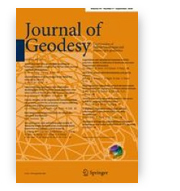Characterization and Sodium Cations Sorption Capacity of Chemically Modified Biochars Produced from Agricultural and Forestry Wastes
Agnieszka Medyńska-Juraszek, Maria Luisa Álvarez, Andrzej Białowiec, Maria Jerzykiewicz
Materials
 Excessive amounts of sodium cations (Na+) in water is an important limiting factor to reuse poor quality water in agriculture or industry, and recently, much attention has been paid to developing cost-effective and easily available water desalination technology that is not limited to natural resources. Biochar seems to be a promising solution for reducing high loads of inorganic contaminant from water and soil solution, and due to the high availability of biomass in agriculture and forestry, its production for these purposes may become beneficial. In the present research, wheat straw, sunflower husk, and pine-chip biochars produced at 250, 450 and 550 °C under simple torrefaction/pyrolysis conditions were chemically modified with ethanol or HCl to determine the effect of these activations on Na sorption capacity from aqueous solution. Biochar sorption property measurements, such as specific surface area, cation exchange capacity, content of base cations in exchangeable forms, and structural changes of biochar surface, were performed by FTIR and EPR spectrometry to study the effect of material chemical activation. The sorption capacity of biochars and activated carbons was investigated by performing batch sorption experiments, and adsorption isotherms were tested with Langmuir’s and Freundlich’s models. The results showed that biochar activation had significant effects on the sorption characteristics of Na+, increasing its capacity (even 10-folds) and inducing the mechanism of ion exchange between biochar and saline solution, especially when ethanol activation was applied. The findings of this study show that biochar produced through torrefaction with ethanol activation requires lower energy demand and carbon footprint and, therefore, is a promising method for studying material applications for environmental and industrial purposes.
Excessive amounts of sodium cations (Na+) in water is an important limiting factor to reuse poor quality water in agriculture or industry, and recently, much attention has been paid to developing cost-effective and easily available water desalination technology that is not limited to natural resources. Biochar seems to be a promising solution for reducing high loads of inorganic contaminant from water and soil solution, and due to the high availability of biomass in agriculture and forestry, its production for these purposes may become beneficial. In the present research, wheat straw, sunflower husk, and pine-chip biochars produced at 250, 450 and 550 °C under simple torrefaction/pyrolysis conditions were chemically modified with ethanol or HCl to determine the effect of these activations on Na sorption capacity from aqueous solution. Biochar sorption property measurements, such as specific surface area, cation exchange capacity, content of base cations in exchangeable forms, and structural changes of biochar surface, were performed by FTIR and EPR spectrometry to study the effect of material chemical activation. The sorption capacity of biochars and activated carbons was investigated by performing batch sorption experiments, and adsorption isotherms were tested with Langmuir’s and Freundlich’s models. The results showed that biochar activation had significant effects on the sorption characteristics of Na+, increasing its capacity (even 10-folds) and inducing the mechanism of ion exchange between biochar and saline solution, especially when ethanol activation was applied. The findings of this study show that biochar produced through torrefaction with ethanol activation requires lower energy demand and carbon footprint and, therefore, is a promising method for studying material applications for environmental and industrial purposes.
DOI:10.3390/ma14164714
Conjugation with phospholipids as a modification increasing anticancer activity of phenolic acids in metastatic melanoma—in vitro and in silico studies
Anna Palko-Łabuz, Anna Gliszczyńska, Magdalena Skonieczna, Andrzej Poła, Olga Wesołowska, Kamila Środa-Pomianek
International Journal of Molecular Sciences
 Phenolic acids possess many beneficial biological activities, including antioxidant and anti-inflammatory properties. Unfortunately, their low bioavailability restricts their potential medical uses, as it limits the concentration of phenolic acids achievable in the organism. The conjugation with phospholipids constitutes one of the most effective strategies to enhance compounds bioavailability in biological systems. In the present study, the conjugates of anisic (ANISA) and veratric acid (VA) with phosphatidylcholine (PC) were investigated. Since both ANISA and VA are inhibitors of tyrosinase, a melanocyte enzyme, the expression of which increases during tumorigenesis, anticancer potential of the conjugates was tested in several metastatic melanoma cell lines. The conjugates proved to be antiproliferative, apoptosis-inducing and cell-cycle-affecting agents, selective for cancerous cells and not affecting normal fibroblasts. The conjugates substituted by ANISA and VA, respectively, at both the sn-1 and sn-2 positions of PC, appeared the most promising, since they were effective against the vast majority of metastatic melanoma cell lines. Additionally, the conjugation of phenolic acids to PC increased their antioxidant activity. Molecular modeling was employed for the first time to estimate the features of the investigated conjugates relevant to their anticancer properties and membrane permeation. Again, the conjugates substituted by phenolic acid at both the sn-1 and sn-2 positions of PC seemed to be presumably most bioavailable.
Phenolic acids possess many beneficial biological activities, including antioxidant and anti-inflammatory properties. Unfortunately, their low bioavailability restricts their potential medical uses, as it limits the concentration of phenolic acids achievable in the organism. The conjugation with phospholipids constitutes one of the most effective strategies to enhance compounds bioavailability in biological systems. In the present study, the conjugates of anisic (ANISA) and veratric acid (VA) with phosphatidylcholine (PC) were investigated. Since both ANISA and VA are inhibitors of tyrosinase, a melanocyte enzyme, the expression of which increases during tumorigenesis, anticancer potential of the conjugates was tested in several metastatic melanoma cell lines. The conjugates proved to be antiproliferative, apoptosis-inducing and cell-cycle-affecting agents, selective for cancerous cells and not affecting normal fibroblasts. The conjugates substituted by ANISA and VA, respectively, at both the sn-1 and sn-2 positions of PC, appeared the most promising, since they were effective against the vast majority of metastatic melanoma cell lines. Additionally, the conjugation of phenolic acids to PC increased their antioxidant activity. Molecular modeling was employed for the first time to estimate the features of the investigated conjugates relevant to their anticancer properties and membrane permeation. Again, the conjugates substituted by phenolic acid at both the sn-1 and sn-2 positions of PC seemed to be presumably most bioavailable.
DOI:10.3390/ijms22168397
SEM Evaluation of Tooth Surface after a Composite Filling Removal Using Er:YAG Laser, Drills with and without Curettes, and Optional EDTA or NaOCl Conditioning
Jan Kiryk, Jacek Matys, Kinga Grzech-Leśniak, Marzena Dominiak, Małgorzata Małecka, Piotr Kuropka, Rafał J. Wiglusz, Maciej Dobrzyński
Materials
 (1) Background: This study aimed to evaluate the microporosity of the tooth surface structure adjacent to the cemento-enamel junction (CEJ) after the removal of composite fillings with a drill in comparison with removal by an Er:YAG laser and after cleaning with a periodontal curette, chemical EDTA and NaOCl (sodium hypochlorite) conditioning. (2) Methods: The research material consisted of 30 extracted premolars with cervical composite fillings. The teeth were divided into six groups according to the method of tooth preparation: group G1 (n = 5)—a diamond drill; group G2 (n = 5)—a diamond drill + curette; group G3 (n = 5)—a diamond drill + 24% EDTA (PrefGel, Straumann, Switzerland); group G4 (n = 5)—an Er:YAG laser (LightWalker, Fotona, Ljubljana, Slovenia) set with the following parameters: power: 1.65 W (composite removal, CR), 1.2 (tooth conditioning, TC), energy: 110 mJ (CR), 80 mJ (TC), frequency: 15 Hz, pulse duration: 50 μs, tip diameter: 1 mm, air/fluid cooling: 4, distance 1.5 mm, energy density: 14.01 J/cm2 (CR), 10.19 J/cm2 (TC); group G5 (n = 5)—an Er:YAG laser + 2% sodium hypochlorite (NaOCl); group G6 (n = 5)—an Er:YAG laser + 5.25% NaOCl. In each tooth, three cavities were made and subjected to analysis. The dentin surface was evaluated using a scanning electron microscope (SEM). (3) Results: Groups G1 and G2 exhibited mechanical damage to the tooth surface structure caused by the rotary motion of a diamond drill. The SEM image showed a smear layer that could only be removed chemically using 24% EDTA gel (group G3). The tooth surfaces prepared with the Er:YAG laser (groups G4–G6) revealed a homogeneous structure without damage along with open dentinal tubules (without smear layer) and visible denaturation of collagen fibers. The sodium hypochlorite (NaOCl) conditioning did not increase the visibility of dentinal tubules. (4) Conclusions: Dentin surfaces have open dentinal tubules after removal of the composite filling using the Er:YAG laser and therefore do not require additional NaOCl conditioning.
(1) Background: This study aimed to evaluate the microporosity of the tooth surface structure adjacent to the cemento-enamel junction (CEJ) after the removal of composite fillings with a drill in comparison with removal by an Er:YAG laser and after cleaning with a periodontal curette, chemical EDTA and NaOCl (sodium hypochlorite) conditioning. (2) Methods: The research material consisted of 30 extracted premolars with cervical composite fillings. The teeth were divided into six groups according to the method of tooth preparation: group G1 (n = 5)—a diamond drill; group G2 (n = 5)—a diamond drill + curette; group G3 (n = 5)—a diamond drill + 24% EDTA (PrefGel, Straumann, Switzerland); group G4 (n = 5)—an Er:YAG laser (LightWalker, Fotona, Ljubljana, Slovenia) set with the following parameters: power: 1.65 W (composite removal, CR), 1.2 (tooth conditioning, TC), energy: 110 mJ (CR), 80 mJ (TC), frequency: 15 Hz, pulse duration: 50 μs, tip diameter: 1 mm, air/fluid cooling: 4, distance 1.5 mm, energy density: 14.01 J/cm2 (CR), 10.19 J/cm2 (TC); group G5 (n = 5)—an Er:YAG laser + 2% sodium hypochlorite (NaOCl); group G6 (n = 5)—an Er:YAG laser + 5.25% NaOCl. In each tooth, three cavities were made and subjected to analysis. The dentin surface was evaluated using a scanning electron microscope (SEM). (3) Results: Groups G1 and G2 exhibited mechanical damage to the tooth surface structure caused by the rotary motion of a diamond drill. The SEM image showed a smear layer that could only be removed chemically using 24% EDTA gel (group G3). The tooth surfaces prepared with the Er:YAG laser (groups G4–G6) revealed a homogeneous structure without damage along with open dentinal tubules (without smear layer) and visible denaturation of collagen fibers. The sodium hypochlorite (NaOCl) conditioning did not increase the visibility of dentinal tubules. (4) Conclusions: Dentin surfaces have open dentinal tubules after removal of the composite filling using the Er:YAG laser and therefore do not require additional NaOCl conditioning.
DOI:10.3390/ma14164469
Tropospheric and range biases in Satellite Laser Ranging
Mateusz Drożdżewski, Krzysztof Sośnica
Journal of Geodesy
 The Satellite Laser Ranging (SLR) technique provides very accurate distance measurements to artificial Earth satellites. SLR is employed for the realization of the origin and the scale of the terrestrial reference frame. Despite the high precision, SLR observations can be affected by various systematic errors. So far, range biases were used to account for systematic measurement errors and mismodeling effects in SLR. Range biases are constant for all elevation angles and independent of the measured distance to a satellite. Recently, intensity-dependent biases for single-photon SLR detectors and offsets of barometer readings and meteorological devices were reported for some SLR stations. In this paper, we study the possibility of the direct estimation of tropospheric biases from SLR observations to LAGEOS satellites. We discuss the correlations between the station heights, range biases, tropospheric biases, and their impact on the repeatability of station coordinates, geocenter motion, and the global scale of the reference frame. We found that the solution with the estimation of tropospheric biases provides more stable station coordinates than the solution with the estimation of range biases. From the common estimation of range and tropospheric biases, we found that most of the systematic effects at SLR stations are better absorbed by elevation-dependent tropospheric biases than range biases which overestimate the total bias effect. The estimation of tropospheric biases changes the SLR-derived global scale by 0.3 mm and the geocenter coordinates by 1 mm for the Z component, causing thus an offset in the realization of the reference frame origin. Estimation of range biases introduces an offset in some SLR-derived low-degree spherical harmonics of the Earth’s gravity field. Therefore, considering elevation-dependent tropospheric and intensity biases is essential for deriving high-accuracy geodetic parameters.
The Satellite Laser Ranging (SLR) technique provides very accurate distance measurements to artificial Earth satellites. SLR is employed for the realization of the origin and the scale of the terrestrial reference frame. Despite the high precision, SLR observations can be affected by various systematic errors. So far, range biases were used to account for systematic measurement errors and mismodeling effects in SLR. Range biases are constant for all elevation angles and independent of the measured distance to a satellite. Recently, intensity-dependent biases for single-photon SLR detectors and offsets of barometer readings and meteorological devices were reported for some SLR stations. In this paper, we study the possibility of the direct estimation of tropospheric biases from SLR observations to LAGEOS satellites. We discuss the correlations between the station heights, range biases, tropospheric biases, and their impact on the repeatability of station coordinates, geocenter motion, and the global scale of the reference frame. We found that the solution with the estimation of tropospheric biases provides more stable station coordinates than the solution with the estimation of range biases. From the common estimation of range and tropospheric biases, we found that most of the systematic effects at SLR stations are better absorbed by elevation-dependent tropospheric biases than range biases which overestimate the total bias effect. The estimation of tropospheric biases changes the SLR-derived global scale by 0.3 mm and the geocenter coordinates by 1 mm for the Z component, causing thus an offset in the realization of the reference frame origin. Estimation of range biases introduces an offset in some SLR-derived low-degree spherical harmonics of the Earth’s gravity field. Therefore, considering elevation-dependent tropospheric and intensity biases is essential for deriving high-accuracy geodetic parameters.
DOI:10.1007/s00190-021-01554-0









